The Role Of Visual Arts In Autism Communication Development
Exploring the Intersection of Art, Autism, and Communication
Visual arts therapy and creative arts interventions are emerging as powerful tools to enhance communication and social skills among children with Autism Spectrum Disorder (ASD). Drawing upon evidence-based research and clinical observations, this article examines how the creative process facilitates emotional expression, behavioral regulation, and social interaction, positioning visual arts as a valuable complement to established therapies like Applied Behavior Analysis (ABA). Through exploring the unique strengths of individuals with autism in visual processing, we reveal how art can serve as a medium for fostering greater independence and meaningful communication.
Understanding Visual Arts Therapy in Autism Support
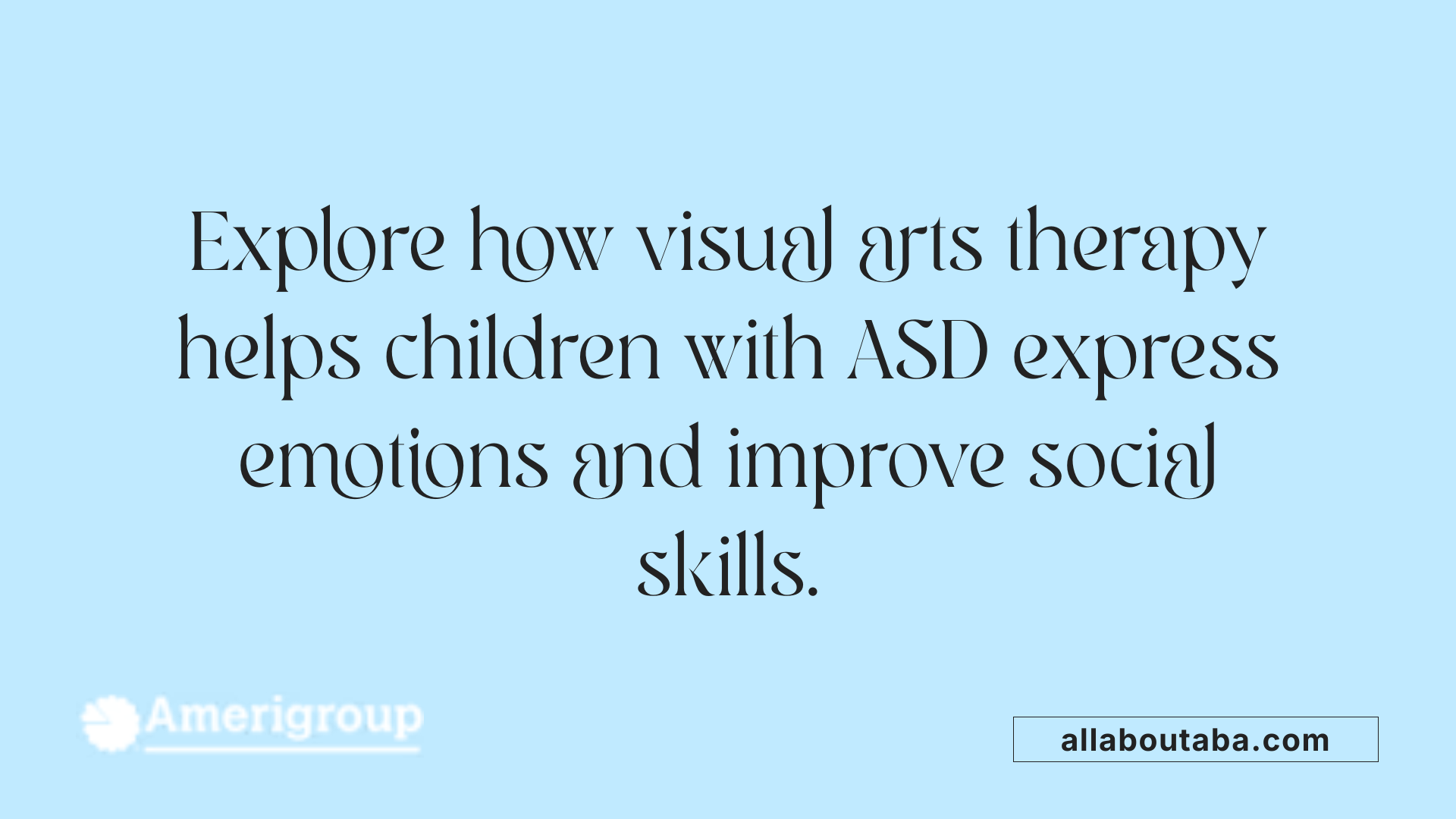
What is Visual Arts Therapy for Children with ASD?
Visual arts therapy is a form of creative arts therapy that includes activities such as drawing, painting, and the use of visual prompts. It harnesses the visual strengths often found in children with Autism Spectrum Disorder (ASD) to encourage self-expression and social communication. This therapy offers a structured yet flexible environment where children can communicate emotions and thoughts non-verbally through art.
Therapeutic Processes: Drawing, Painting, and Visual Prompts
In practice, visual arts therapy involves various expressive tools such as drawing and painting to help children articulate feelings that may be difficult to express verbally. For example, some children use visual prompts like pictures or symbols to convey emotions or explain experiences, facilitating communication when language is a barrier. Visual supports, including drawings and photographs, can also aid in creating schedules, completing tasks, and understanding abstract concepts like time.
Expressive Opportunities Through Art
Art therapy provides safe spaces for children with ASD to explore their emotions and social interactions. It allows them to process complex feelings such as frustration or happiness, and improve concentration, sensory regulation, and flexibility. Case studies have highlighted how children use art to express experiences of bullying or loud noises—emotions that might otherwise be challenging to communicate. Importantly, these interventions typically involve multiple sessions to achieve meaningful improvements in communication and social skills.
How ABA Therapy Complements Arts Therapy
While ABA therapy focuses on behavior and skill-building using principles like positive reinforcement, visual supports derived from arts therapy complement these aims by fostering understanding and expression in a more creative, less structured way. Together, they provide a holistic approach to supporting individuals with autism, improving participation, independence, and emotional wellbeing.
Key Benefits of Visual and Creative Arts for Communication Development in ASD
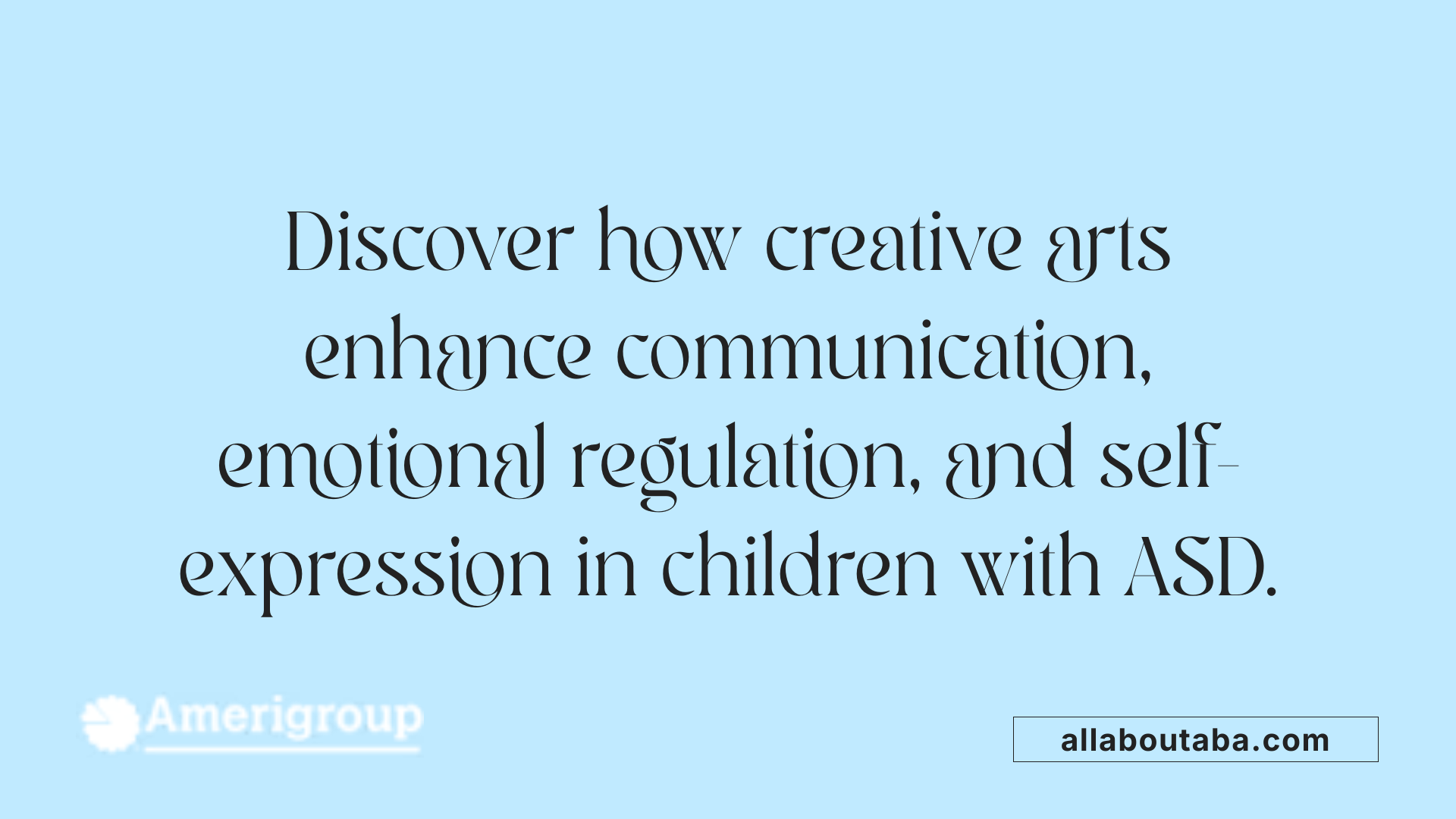
How Do Creative Arts Improve Social Interaction and Emotional Regulation in Children with ASD?
Creative arts interventions such as drawing, painting, music, and theater have been shown to enhance social interaction skills and emotional regulation in children with autism spectrum disorder (ASD). These approaches provide a supportive environment where children can engage with peers and express emotions safely, reducing anxiety and fostering cooperation in natural settings.
In What Ways Does Art Enhance Communication Skills?
Visual arts therapy is particularly effective in boosting communication for children with ASD who often face challenges in verbal expression. Using visual prompts and expressive art-making, children can relay complex feelings and thoughts they may not be able to articulate verbally. This non-verbal outlet helps improve overall communication capabilities, reducing behavioral issues linked to communication difficulties.
How Does Creative Arts Foster Increased Self-Expression?
Participation in creative arts offers children with ASD opportunities for self-expression, which supports psychological and social well-being. Art activities allow children to explore feelings and ideas, promoting flexibility, sensory regulation, and self-esteem. Case studies illustrate how children use art to communicate emotions ranging from sadness caused by sensory triggers to feelings about social experiences like bullying.
Why Are Multiple Sessions Important for Effectiveness?
Research highlights that multiple art therapy sessions are generally necessary to achieve meaningful improvements in communication and social skills. Consistent engagement over time helps reinforce skills and translate gains into daily life, supporting long-term emotional and social benefits for children with ASD.
Leveraging Strengths in Visual Processing for Autism Therapy
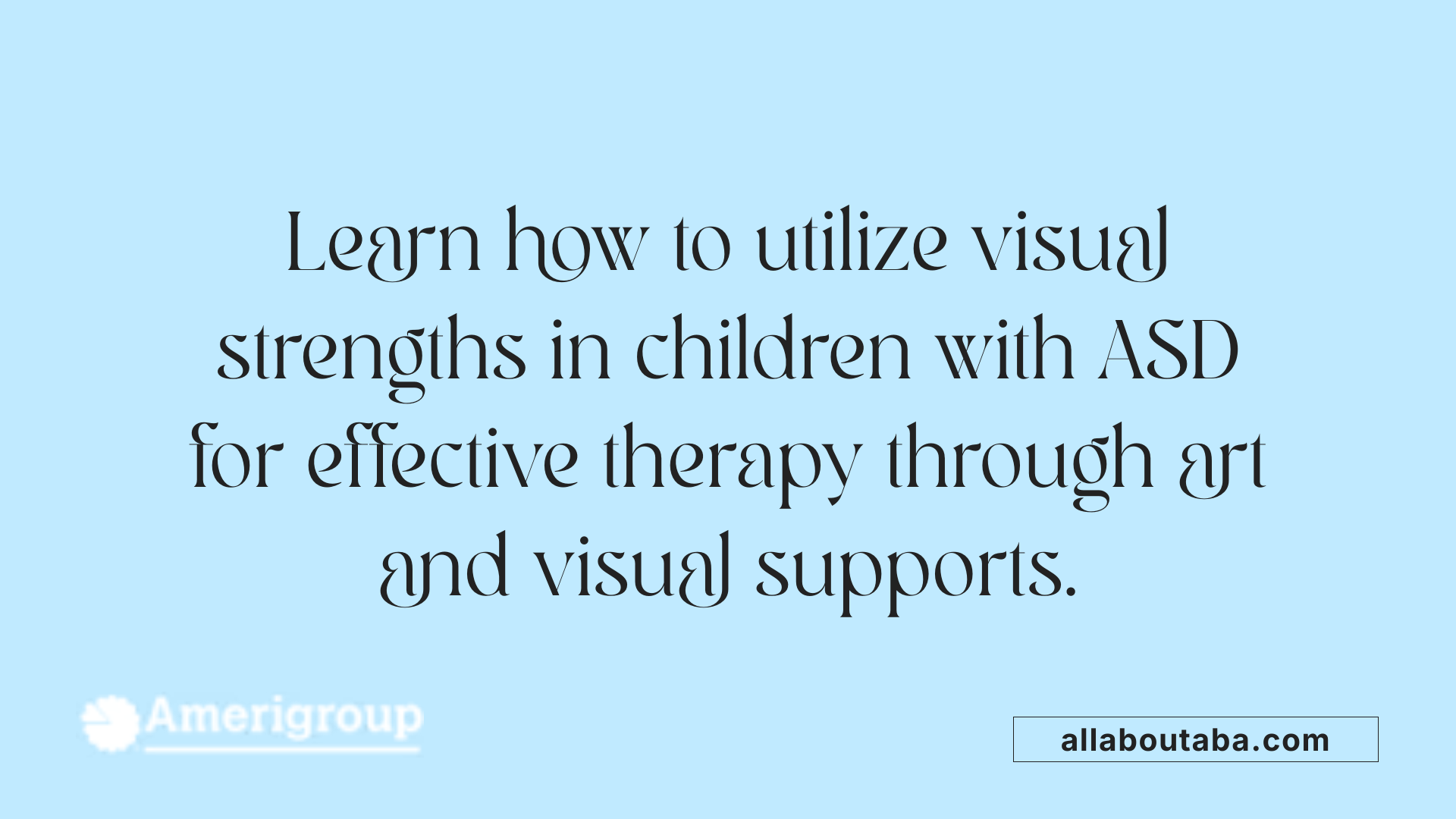
What Are Visual Processing Strengths in Children with ASD?
Children with Autism Spectrum Disorder (ASD) often show notable strengths in visual processing. This means they are particularly skilled at interpreting visual information such as images, symbols, and patterns. These abilities can serve as a foundation for therapy, especially when verbal communication is challenging.
How Do Visual Arts Therapies Capitalize on These Strengths?
Visual arts therapies tap into these visual processing strengths by encouraging children to use art as a form of self-expression. Techniques include drawing, painting, and crafting visual prompts that help children convey complex feelings and thoughts without relying solely on words. For example, art therapy provides opportunities to develop flexibility in thinking and enhance concentration. Case studies demonstrate how children like Ryan and James used visual art to communicate emotions ranging from sadness to frustration effectively.
What Are the Implications for Enhancing Communication and Flexibility?
By leveraging visual strengths, creative arts therapies improve communication skills, especially for children who struggle with language. Artistic expression offers a safe and supportive outlet that reduces anxiety and behavioral issues linked to communication difficulties. Moreover, engaging in visual arts can boost sensory regulation and adaptability, enabling better transitions and overall well-being. Integrating these therapies within educational and clinical settings creates opportunities for social learning and emotional growth tailored to individual needs.
Creative Arts Therapy Modalities and Their Impact on Autism
What Are the Different Modalities of Creative Arts Therapy Used with Children with ASD?
Creative arts therapies encompass several expressive forms such as painting, drawing, music, drama, dance/movement, psychodrama, and poetry. Among these, visual arts therapy — including drawing and painting — is notably beneficial due to many children with Autism Spectrum Disorder having strengths in visual processing. Music and drama also serve as powerful tools that engage children to express themselves beyond verbal communication.
How Do These Modalities Affect Psychological and Social Well-Being?
Creative arts therapies offer autistic children safe environments where they can safely explore emotions and social connections. Through art-making activities, children show improved concentration, sensory regulation, and flexibility. These processes contribute to emotional expression, reduce behavioral issues linked to communication difficulties, and support better social interaction.
For example, case studies reveal that children like Ryan and James used art to express complex feelings including sadness and frustration related to daily experiences, which helped enhance their emotional well-being and reduce anxiety.
What Is the Variability in Goals and Assessment Methods of These Therapies?
Creative arts therapy interventions display wide variability in their goals and assessment criteria. Some focus on enhancing communication skills, others prioritize emotional regulation or social cooperation. Assessment tools differ accordingly, ranging from qualitative observations of social engagement to standardized psychological scales.
Despite this variety, the consistent finding is that most studies support creative arts therapies as beneficial, showing positive effects on communication, social skills, and body functions without adverse effects.
| Therapy Modality | Examples | Benefits for Children with ASD |
|---|---|---|
| Visual Arts | Drawing, Painting | Enhances visual processing, emotional expression, concentration |
| Music Therapy | Singing, Instrument Play | Improves social interaction, emotional regulation |
| Drama Therapy | Role-play, Psychodrama | Supports social skills, understanding emotions |
| Dance/Movement | Movement through music | Increases sensory regulation, body awareness |
| Poetry | Creative writing and recitation | Facilitates self-expression and language development |
Case Studies Highlighting Visual Arts in Autism Communication
Specific case examples: Ryan and James
Two compelling case studies illustrate how visual arts therapy aids children with Autism Spectrum Disorder (ASD) in communicating their emotions and thoughts. Ryan, a 7-year-old with Level 1 ASD, used visual prompts and art to express feelings such as sadness caused by loud noises and happiness when playing with toys. Similarly, James, aged 10 with Level 2 ASD, utilized art to communicate complex emotions related to bullying and to work through anger and frustration.
Use of visual prompts to express feelings and complex thoughts
Visual prompts serve as a vital tool in these therapies, especially since many children with ASD struggle with verbal communication. For Ryan, visual prompts helped him translate his sensory experiences and emotions into tangible art forms. For James, art became a medium to navigate and express intricate feelings that might be difficult to articulate otherwise. This use of visual supports empowers children to externalize their inner experiences safely.
Role of art in reducing behavioral issues related to communication
Art therapy not only provides a non-verbal outlet but also plays a significant role in managing behavioral challenges associated with communication difficulties. Both Ryan and James showed improvements in behavioral regulation through their engagement with art, which helped decrease frustration and anxiety. The creative process enhances concentration, sensory regulation, and flexibility, contributing to overall wellbeing and social interaction skills.
These case studies support the integration of art therapy programs into educational and clinical settings, emphasizing its effectiveness in fostering emotional expression and reducing behavioral issues in children with ASD.
Visual Supports in ABA: Tools Empowering Communication
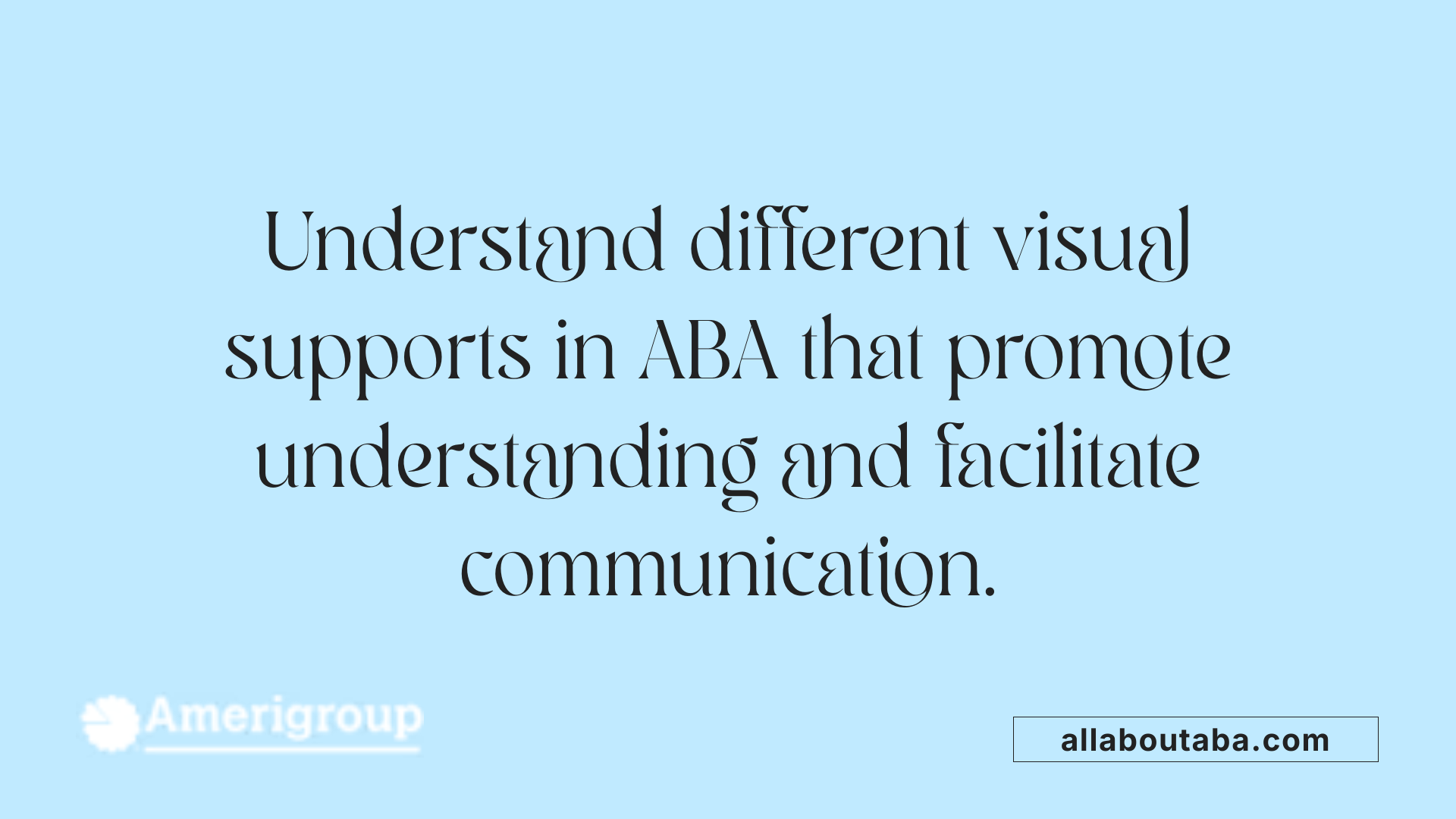
What Are Visual Supports in ABA Therapy?
Visual supports in Applied Behavior Analysis (ABA) therapy are tools like drawings, photographs, written words, and objects designed to aid individuals with autism spectrum disorder (ASD) in communication and social interaction. These aids help bridge difficulties in understanding and using language that many individuals with ASD face.
Types of Visual Supports Used in ABA
- Visual Schedules: Displaying daily routines or sequences of activities to provide predictability.
- Checklists: Guiding task completion through step-by-step visuals.
- Reminders: Pictures showing specific actions, such as handwashing, to reinforce proper behavior.
- Priming Tools: Visual cues to prepare individuals for upcoming events.
These supports can be simple, homemade items like magazine cutouts or printouts, as well as specialized digital tools such as Boardmaker and SymWriter.
How Visual Supports Aid Understanding and Expression
Visual supports assist both in comprehending language and expressing needs or choices. For example, they allow children to make decisions independently, follow schedules, and understand abstract concepts like time. By creating structured and predictable environments, visual supports reduce anxiety and minimize unwanted behaviors.
This enhanced predictability promotes greater independence, better focus, and smoother transitions between tasks, ultimately supporting the development of communication and social interaction skills.
Contextualizing ABA Therapy
ABA therapy is a scientifically backed, individualized approach that uses positive reinforcement and behavior analysis principles to develop skills including communication, self-care, and social engagement. Visual supports are integral within ABA programs, empowering individuals with ASD to participate actively and improve their quality of life through clearer communication pathways.
Creating Predictability and Reducing Anxiety with Visual Supports
Role of visual supports in establishing routine and predictability
Visual supports such as drawings, photos, checklists, and schedules play an essential role in creating a structured and predictable environment for children with Autism Spectrum Disorder (ASD). These supports help make daily routines clearer, allowing children to anticipate what comes next and reducing uncertainty.
Reducing anxiety and undesired behaviors through visual cues
By providing clear, visual information, these supports reduce anxiety that can arise from unpredictable situations. When children understand expectations, they are less likely to exhibit undesirable behaviors linked to confusion or frustration. Visual cues act as calming tools by offering a constant, comprehensible reference.
Enhancing independence and task transitions
Visual supports also encourage greater independence by guiding children through tasks without constant adult intervention. Tools like visual schedules and reminders assist in smoother transitions between activities, minimizing stress and enhancing focus. For example, picture-based handwashing reminders or step-by-step checklists empower children to complete daily tasks more confidently.
The use of affordable homemade visual aids or specialized software ensures these supports are accessible and adaptable for individual needs, reinforcing their effectiveness in fostering a safe and structured setting for children with ASD.
Accessibility and Creation of Visual Supports for Autism
Use of Inexpensive, Homemade Visual Aids
Visual supports play a crucial role in assisting individuals with Autism Spectrum Disorder (ASD) in communication and social interaction. These supports can be cost-effectively created at home using readily available materials. Common homemade aids include magazine cutouts, printed images, and simple drawings. Such visuals help children with ASD make choices, follow daily schedules, complete tasks, and better understand abstract concepts like time.
Specialized Software for Creating Visual Supports
Beyond homemade options, specialized software tools like Boardmaker and SymWriter provide structured and customizable platforms to create visual supports. These programs offer libraries of symbols and templates crafted specifically for therapeutic and educational use. They enable caregivers and therapists to tailor visual supports to the unique needs of each child, enhancing communication and predictability in daily routines.
Practical Aspects of Visual Support Implementation
Implementing visual supports effectively involves creating predictability and reducing anxiety through clear, consistent visuals. Examples include visual schedules outlining daily activities, reminders such as images showing handwashing steps, checklists to track task completion, and priming tools preparing children for upcoming events. Both homemade and software-generated visuals should be regularly updated and integrated seamlessly into the child’s environment to promote independence, focus, and smooth transitions between tasks.
Collaborative and Individualized Nature of Arts-Based Interventions
Benefits of individual versus group formats
Creative arts interventions for children with Autism Spectrum Disorder (ASD) are effective in both individual and group settings. Research shows that group formats facilitate social interaction and peer cooperation, creating natural settings for children to practice communication and collaboration skills. Meanwhile, individual sessions allow for personalized focus on each child's unique challenges and strengths, providing tailored support for emotional expression and regulation.
Customization of duration, intensity, and modality
To maximize therapeutic benefits, the duration and intensity of creative arts interventions must be adapted to each child's needs. Multiple sessions are generally required to achieve significant improvements in social skills, communication, and emotional regulation. The choice of modality—whether art, music, theater, or dance—should align with the child's preferences and abilities to encourage engagement and meaningful participation.
Importance of evidence-driven guidelines
Planning arts-based interventions using evidence-driven guidelines ensures effective outcomes for children with ASD. Studies, including randomized controlled trials and cohort analyses, highlight that structured programming with clear goals, consistent sessions, and measured intensity yields better progress. Employing these guidelines helps occupational therapists optimize intervention plans by selecting the right format, session frequency, and creative medium to support each child's developmental domains within the Occupational Therapy Practice Framework.
Integrating Visual Arts Therapy with ABA for Holistic Autism Support
Complementary roles of art therapy and ABA
Applied Behavior Analysis (ABA) is typically delivered by professionals such as Board Certified Behavior Analysts (BCBAs), along with trained behavior therapists and technicians. They focus on structured behavioral interventions to promote communication, social skills, and adaptive behaviors. In contrast, visual arts therapy offers a creative and expressive outlet, supporting emotional regulation and self-expression. Together, these therapies address both skill acquisition and the child's emotional and sensory needs, making the intervention more holistic.
How visual arts can enhance ABA-based communication goals
Children with Autism Spectrum Disorder often have strengths in visual processing. Visual arts therapy leverages this by providing nonverbal means of communication through drawing and painting, which complements the verbal communication skills targeted in ABA. For example, visual supports such as drawings and picture schedules used in ABA can be enriched by the child’s own artwork, deepening understanding and engagement.
Art-making activities increase concentration, sensory regulation, and flexibility to change, which can reduce anxiety and improve task transitions aligned with ABA goals. Moreover, art therapy creates a safe space for children to express emotions not easily verbalized, which fosters better communication and social interaction paired with ABA strategies.
Examples of combined therapeutic approaches
- Using Visual Supports Enhanced by Art Therapy: Incorporating a child's artwork into ABA visual schedules and reminders, such as custom handwashing pictures, to make routines more personalized and motivating.
- Art-Based Social Skills Groups: Combining group art therapy sessions with ABA social skills training to promote peer cooperation and naturalistic learning environments.
- Emotional Expression through Art to Complement Behavior Plans: Integrating art sessions where children express feelings about specific behaviors (e.g., frustration or anxiety) that are addressed behaviorally in ABA programs.
This integrated approach helps children better generalize skills and improves their overall wellbeing by combining structure with creative expression.
Monitoring and Measuring Progress in Visual Arts and ABA Therapies
How is the effectiveness of ABA therapy measured?
ABA therapy effectiveness is gauged through systematic data collection and behavioral analysis. Behavior analysts, such as Board Certified Behavior Analysts (BCBAs), employ tools like frequency counts and duration recordings to track a child's progress toward personalized goals. These methods focus on observable behaviors related to communication, social skills, and adaptive functioning.
Use of systematic data collection and behavioral analysis
Consistent documentation of behaviors allows therapists to monitor changes over time. This approach helps identify improvements and areas needing adjustment. Data is reviewed regularly, supporting evidence-driven decisions to refine or reshape the treatment plan for optimized outcomes.
Indicators of improvement in communication and social skills
Key signs of progress include enhanced communication abilities, better social interactions, greater independence, and diminished challenging behaviors. These improvements reflect the child's growing capability to understand and express language, follow routines with visual supports, and navigate social environments more confidently.
Adjusting therapeutic approaches based on progress
Therapeutic strategies are adjusted in response to the collected data. If progress slows or plateaus, intervention intensity, duration, or methods may be modified. Both ABA and visual arts therapies benefit from this adaptive approach, ensuring that the unique needs of each child remain the focus.
Systematic evaluation not only validates therapy effectiveness but also guides ongoing intervention plans, maximizing benefits for children with ASD.
Addressing Challenges and Controversies in Autism Therapies
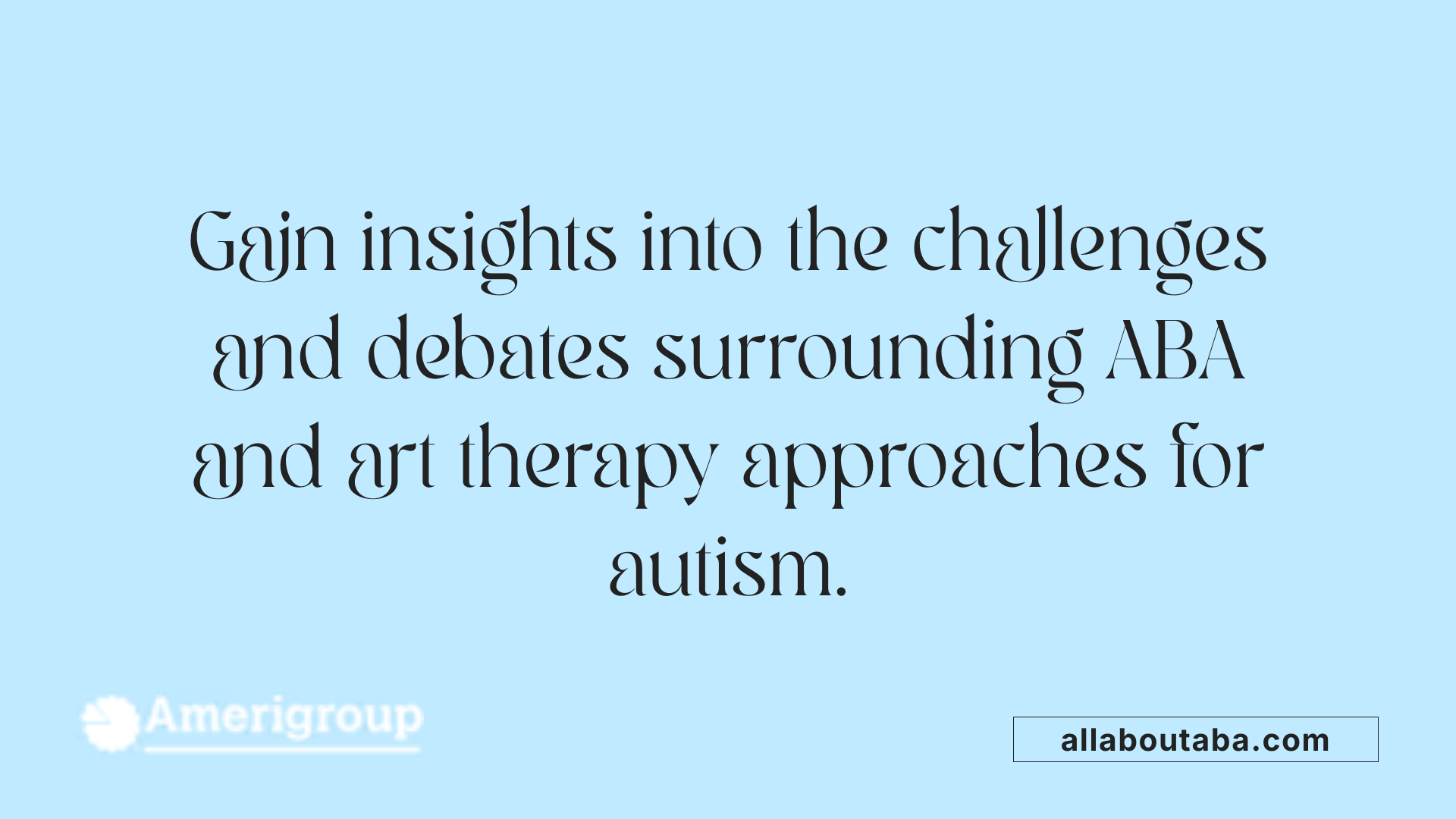
What challenges or controversies are associated with ABA therapy for autism?
Applied Behavior Analysis (ABA) therapy is widely used to support individuals with autism spectrum disorder (ASD). However, it faces several critiques and challenges. Historically, some ABA approaches were highly intensive, demanding 10 to 20 hours of intervention weekly, which could strain families and caregivers. Although modern methods have moved away from aversive and punitive techniques, early practices sometimes involved them, leading to lasting concerns about the ethics of this approach.
Critics of ABA often emphasize the need for more person-centered and respectful methods. They argue that ABA's strong focus on modifying behaviors might overshadow the child’s internal experiences and unique neurodiverse traits. Instead of fostering neurodiversity acceptance, some fear ABA aims at “normalizing” behaviors, which may conflict with the individual’s dignity and preferences.
The role of art therapy in providing non-verbal expression alternatives
Art therapy offers a compassionate and effective alternative or complement to ABA for children with ASD. It leverages creative processes like drawing, painting, and music to provide a safe space for self-expression, particularly for children who struggle with verbal communication. Case studies have shown how children with varying levels of ASD use visual art to express complex emotions such as anger, sadness, and joy.
Art therapy not only enhances emotional expression but also supports social interaction, sensory regulation, and flexibility. Children often find it easier to communicate feelings through art, which can reduce behavioral challenges linked to frustration or communication difficulties. This approach respects the individuality of each child, providing a person-centered pairing that enhances their wellbeing and social participation.
Both ABA and art therapy have demonstrated benefits but differ in their methods and emphasis. While ABA focuses largely on behavioral skills, art therapy enriches emotional and social domains through creative, less directive means, representing a valuable complementary strategy for children with ASD.
Promoting Emotional Expression and Wellbeing Through Art
How Does Art Serve as a Tool for Expressing Complex Emotions?
Art therapy offers children with Autism Spectrum Disorder (ASD) a unique medium to communicate feelings that may be difficult to express verbally. For example, children like Ryan and James, who have Level 1 and Level 2 ASD respectively, used visual prompts and art to explore emotions such as sadness, happiness, anger, and frustration. This non-verbal expression creates a safe outlet, especially for those who face challenges in traditional communication, allowing them to share their experiences and emotions more effectively.
In What Ways Does Art Therapy Improve Sensory Regulation and Concentration?
The process of creating art has been found to enhance sensory regulation and concentration among children with ASD. Engaging in art activities can increase a child's flexibility and attention span, helping them manage sensory input better. This heightened sensory control promotes calmer behavior and enables the child to focus more fully during the therapy and other daily activities.
How Does Art Therapy Increase Self-Esteem and Overall Wellbeing?
Participating in art therapy fosters increased self-esteem and overall wellbeing by providing children with a sense of accomplishment and an opportunity to engage socially. The creative process encourages flexibility and self-expression, which boosts confidence and supports positive social interactions. These benefits contribute to enhanced psychological health and improved quality of life, supporting the inclusion of art therapy programs in educational and clinical settings for children with ASD.
From Theory to Practice: Implementing Art Therapy in Clinical and Educational Settings
Successful Integration of Art Therapy Programs
Art therapy programs have shown promising results when incorporated into educational and clinical settings for children with Autism Spectrum Disorder (ASD). These programs create safe environments where children express their feelings and improve social communication skills. For example, children like Ryan and James used art to communicate emotions and experiences that are otherwise challenging to verbalize, highlighting the therapy's role in emotional regulation and behavioral improvement. Implementing art therapy in schools and clinics involves structured sessions using visual prompts and creative activities tailored to children's individual needs.
Educator and Clinician Roles
Educators and clinicians play pivotal roles in the effective delivery of art therapy interventions. They should collaborate to plan interventions based on evidence-driven guidelines that consider the duration, intensity, and modality appropriate for each child. Both group and individual formats are effective, allowing flexibility to match the child's preferences and therapeutic goals. Clinicians often focus on guiding emotional expression and sensory regulation, while educators support skill generalization in social and communication domains within natural settings.
Outcomes Related to Social Interaction and Emotional Development
Research highlights consistent benefits of art therapy on social interaction and emotional development in children with ASD. Improvements include enhanced communication, increased cooperation with peers, better emotional expression, and decreased behavioral challenges tied to communication difficulties. The creative process encourages concentration, sensory regulation, and adaptability, which collectively enhance overall wellbeing. Multiple therapy sessions are generally necessary to produce significant and sustained improvements, reinforcing the importance of consistent program implementation.
Social Learning and Peer Cooperation Facilitated by Creative Arts
How Do Group Settings Promote Interaction and Collaboration?
Creative arts interventions in group settings provide children with Autism Spectrum Disorder (ASD) a structured and supportive environment to enhance social interaction skills. Participating alongside peers offers natural opportunities for children to engage in cooperative activities such as joint painting or collaborative music sessions. These shared tasks encourage turn-taking, joint attention, and communication, fostering interpersonal engagement within a safe and creative context.
How Are Natural Settings Used for Social Skills Development?
Creative arts therapies often take place in naturalistic environments where children with ASD feel comfortable and motivated. These settings enable children to express themselves spontaneously through art, drama, or music, facilitating authentic social behaviors. Engaging in expressive activities in familiar settings helps children practice social skills in real-life contexts, contributing to improved emotional regulation, attention, and communication.
How Do Creative Arts Interventions Support Peer Relationship Building?
Through repeated sessions in either group or individual formats, children with ASD develop meaningful connections with peers. Creative art-making acts as a bridge for nonverbal communication and emotional expression, allowing children to share feelings and experiences that may be difficult to verbalize. This shared creative experience nurtures empathy, cooperation, and mutual understanding, which are crucial components of healthy peer relationships.
In summary, creative arts interventions serve as valuable tools for promoting social learning and peer cooperation among children with ASD. By providing a safe space for expression and collaboration within natural settings, these therapies enrich the social development and occupational engagement of participating children.
Future Directions and Research Needs in Visual Arts and Autism Communication
Variability in Goals and Assessment Tools
Creative arts therapy interventions for autistic children currently show significant variability in their goals, methods, and assessment tools. This diversity reflects the broad range of individual needs and therapeutic settings but also poses challenges for comparing outcomes across studies and establishing best practices.
Need for Standardized Approaches and Robust Evidence
There is a clear need for more standardized intervention protocols and assessment measures to strengthen the evidence base for visual arts therapies in autism communication. Although many studies report positive effects, the majority vary in design and rigor. Future research should focus on conducting larger randomized controlled trials and longitudinal studies to provide Level 1 evidence that can guide clinical practice.
Potential for Expanded Integration of Therapies
The integration of visual arts therapy with other creative arts interventions and occupational therapy frameworks offers promising avenues to enhance communication, social interaction, and emotional regulation for children with ASD. Developing multidisciplinary programs that combine visual supports with art-based self-expression could create more comprehensive and effective treatment options.
Efforts should also aim to tailor therapy duration, intensity, and modality based on individual strengths, such as visual processing abilities common in autistic children. This personalized approach may maximize therapeutic outcomes and support broader inclusion of artistic therapies within educational and clinical settings.
Visual Arts in Autism Therapy: A Complementary Path Forward
Visual arts therapy represents a promising and effective complement to established therapies such as Applied Behavior Analysis in supporting communication development for individuals with autism. Grounded in scientific evidence and enriched by creative expression, visual arts interventions harness the strengths of children with ASD in visual processing to facilitate emotional expression, social interaction, and behavioral regulation. By providing safe and engaging environments for self-expression, these therapies empower children to communicate in ways traditional methods may not address. Continued research, personalized program design, and collaborative integration within clinical and educational frameworks will be essential to fully realize the potential of visual arts in autism communication development, enhancing quality of life and fostering greater independence for individuals on the spectrum.
References
- Art Interventions for Children With Autism Spectrum Disorder
- How are Visual Supports Used in Applied Behavior Analysis?
- Creative arts therapy for autistic children: A systematic review
- Using Visual Arts to Encourage Children with Autism ...
- Applied Behavior Analysis (ABA)
- The Controversy Around ABA
- Applied Behavior Analysis (ABA)
- Efficacy of Interventions Based on Applied Behavior ...
Other articles
Recent articles

Best Practices For Transitioning Autistic Children Into New Schools

Autism And Time Management Challenges In Adulthood

The Role Of Visual Arts In Autism Communication Development

How To Address Tactile Defensiveness In Autism

Best Practices For Telehealth Autism Therapy

How To Help Autistic Children Develop Friendship Skills

How Schools Can Support Autistic Students In Career Prep

Best Strategies For Autism-Friendly Event Planning

Understanding Noncontingent Reinforcement In Autism Behavior Plans

How Drama Therapy Benefits Autistic Individuals

Best Practices For Autism-Friendly Fitness And Recreation Centers

Best Ways To Promote Healthy Social Media Use For Autistic Teens

How To Help Autistic Children Cope With Public Speaking

Autism And Strategies For Managing Unexpected Changes

Best Podcasts About Autism For Parents And Educators

Autism And The Impact Of Seasonal Changes On Behavior

The Role Of Diet In Managing Co-Occurring Conditions With Autism

Sleep Challenges In Autism And Practical Solutions

Best Ways To Build Daily Routines For Autistic Children

Best Practices For Supporting Autistic Entrepreneurs

Autism And Strategies For Navigating Large Social Gatherings

Adaptive Sports And Recreational Activities For People With Autism

Autism And The Benefits Of Story-Based Learning Activities

Understanding The Role Of Play In Autism Development

Autism And The Impact Of Environmental Noise On Learning

How To Create Autism-Friendly Community Spaces

Autism And Chronic Health Conditions: What To Know

The Role Of Care Managers In Autism Life Planning

How To Teach Social Boundaries To Autistic Children

How Autistic Individuals Experience Empathy Differently

How To Support Autistic Employees In Remote Work Settings

Autism And The Relationship Between Motor Skills And Learning

How To Create Community Resource Guides For Autism Families

How To Teach Daily Living Skills To Autistic Teens

Autism And The Impact Of Mind-Body Practices On Stress Reduction

Autism And The Benefits Of Outdoor Group Activities

How To Create Autism-Friendly Sensory Paths In Schools

Best Practices For Autism-Friendly Park And Recreation Areas

Autism And Strategies For Reducing School Refusal

Supporting Autistic Individuals In Public Speaking

The Role Of Diet In Managing Autism Symptoms

The Benefits Of Gardening Clubs For Autism Social Development

How To Prepare Autistic Children For Dental Visits

Autism And Employment: Career Paths That Work

Best Practices For Autism-Friendly Hotels And Lodging

The Impact Of Screen Time On Autism Development

Autism Screening Tools For Early Childhood

The Role Of Physical Exercise In Autism Therapy

Best Strategies For Supporting Autistic College Students

The Role Of Technology In Autism Early Detection

Sensory-Friendly Classroom Design Ideas For Autistic Students

The Role Of Speech Therapy In Building Social Communication Skills

Best Strategies For Handling Autistic Burnout In Adults

Autism And The Importance Of Predictability In Routine

Autism And Peer Education: Teaching Acceptance In Schools

Best Practices For Sensory-Friendly Libraries And Reading Rooms

Self-Advocacy Skills For Autistic Adults

The Role Of Technology In Autism Peer Communication

Promoting Physical Activity In Children With Autism

How To Prepare Autistic Children For Medical Procedures

The Role Of Social Media In Autism Advocacy And Awareness

The Impact Of Sensory Rooms In Public Facilities For Autism

How To Create An Autism-Friendly Holiday Celebration

Best Practices For Inclusive Education For Autistic Students
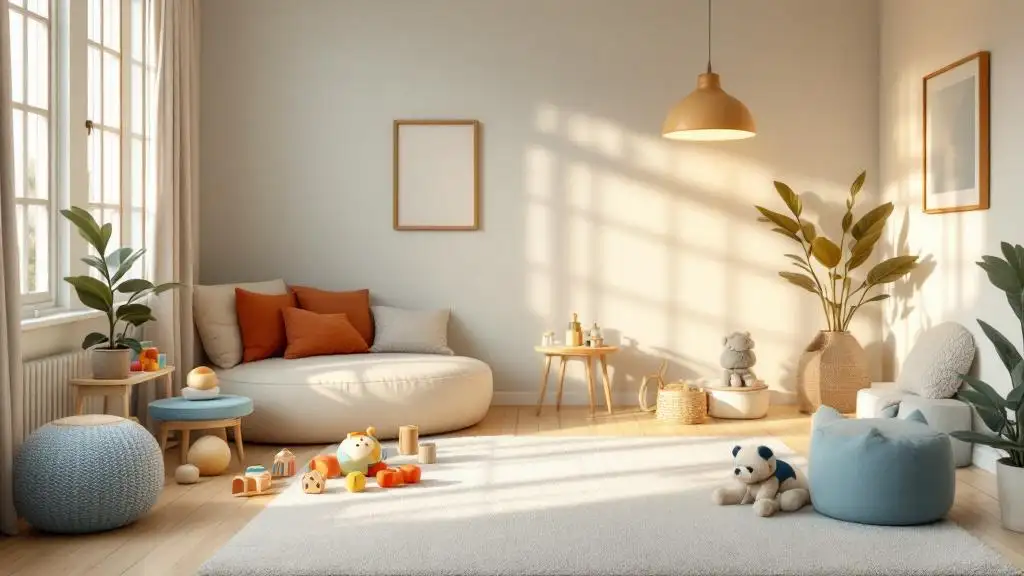
Autism And Mental Health: Recognizing Signs Of Distress

Best Practices For Sensory-Friendly Waiting Rooms
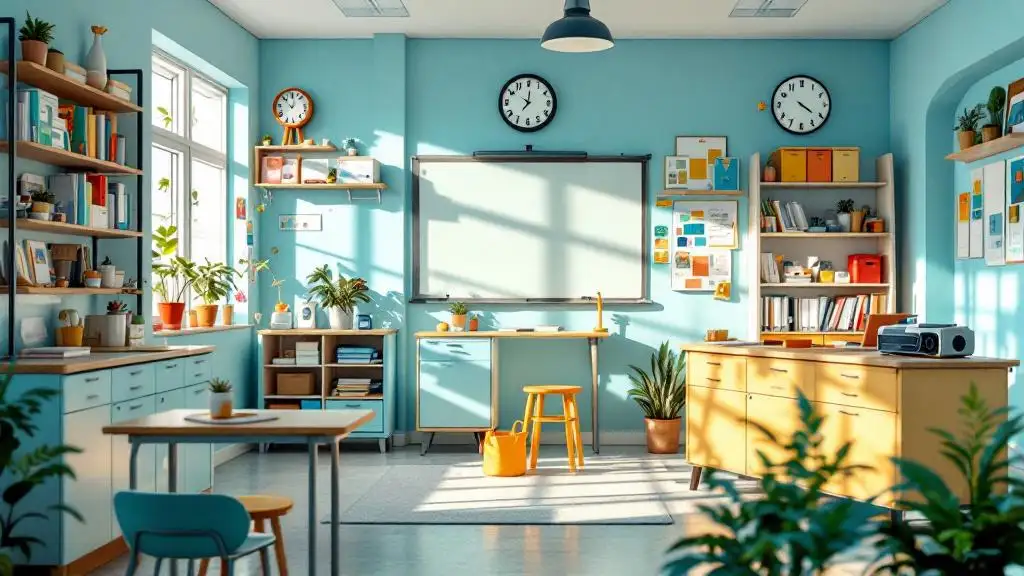
The Role Of Teachers In Early Autism Red Flag Identification

Autism-Friendly Housing Design Features

Autism-Friendly Housing Design Features
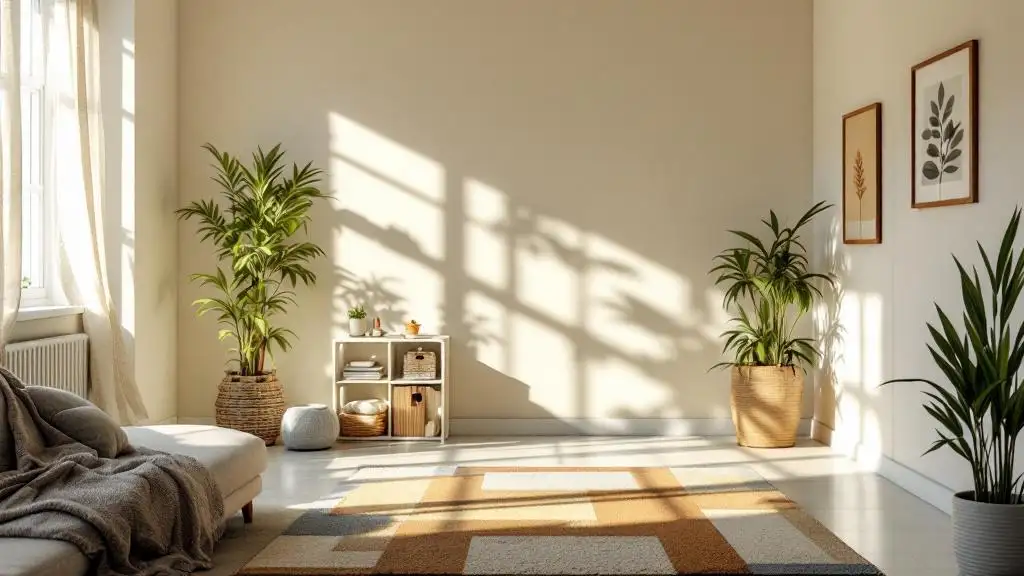
How Environmental Modifications Improve Autism Outcomes

Autism And Technology-Based Learning Tools
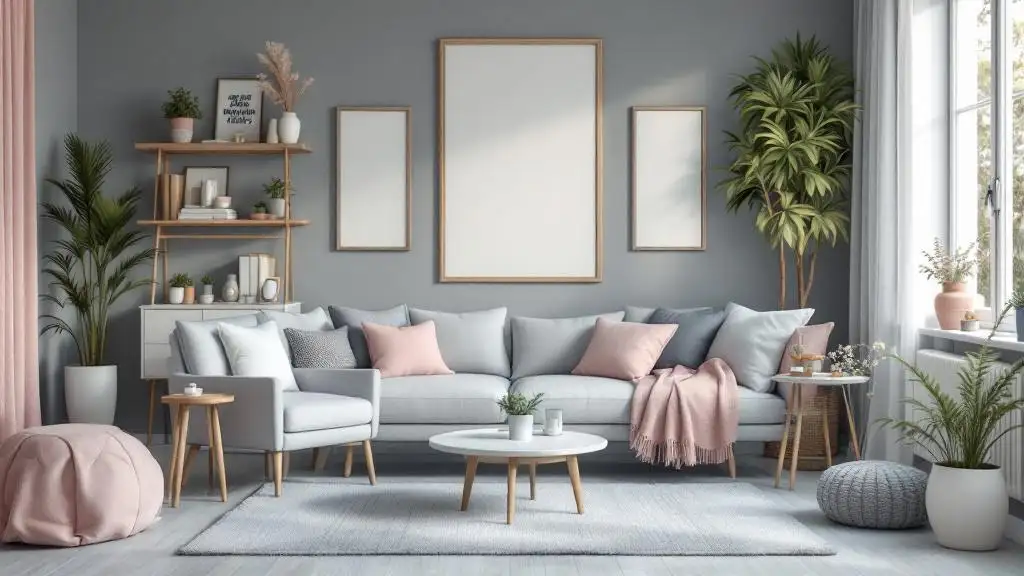
Supporting Autistic Children Through Changes In Routine

The Link Between Autism And Working Memory Challenges

Best Practices For Autism-Friendly Cooking Classes

Autism And The Benefits Of Structured Music Lessons

Best Books To Teach Kids About Autism Acceptance
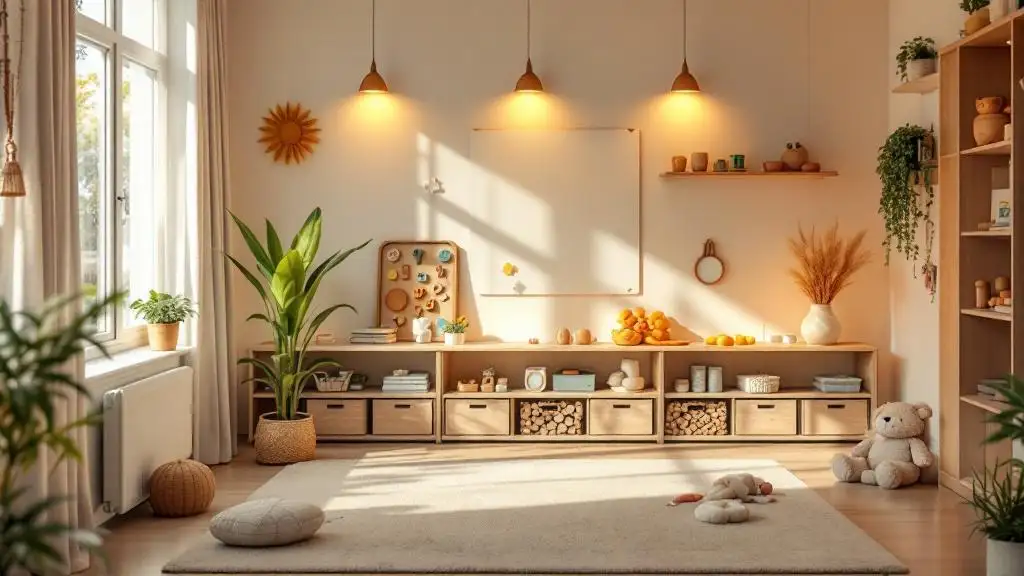
Sensory Diets And Their Benefits For Autism Management

How To Prepare Autistic Teens For Driver’s Education

How To Teach Autistic Teens About Healthy Relationships
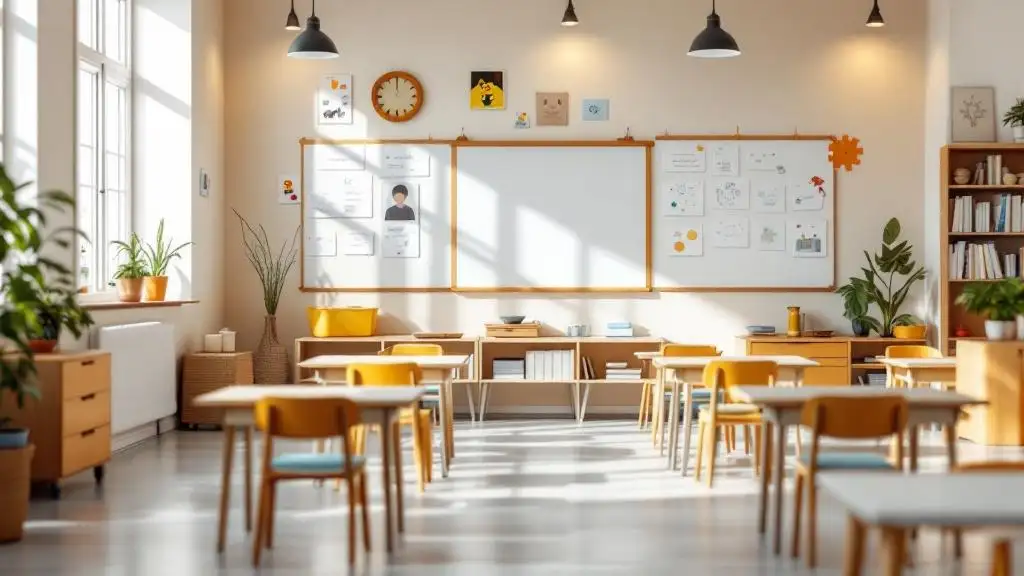
The Role Of Visual Prompts In Building Daily Habits For Autism

Addressing Sleep Regression In Children With Autism
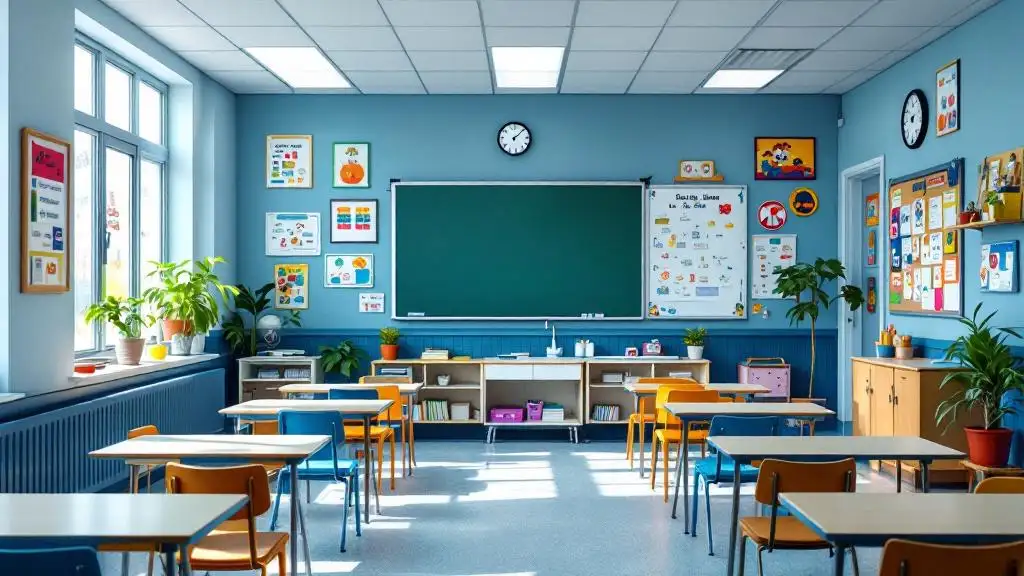
Understanding Social Stories And How They Help Autistic Children

Navigating Insurance Coverage For Autism Therapy Services

How To Prepare Autistic Adults For Independent Travel

Supporting Autistic Individuals In Volunteer Work

How Mindfulness Practices Can Support Autism Well-Being

Understanding Hyperfocus And Special Interests In Autism

Understanding Stimming As A Self-Regulation Tool

Sensory-Based Interventions For Autism At Home
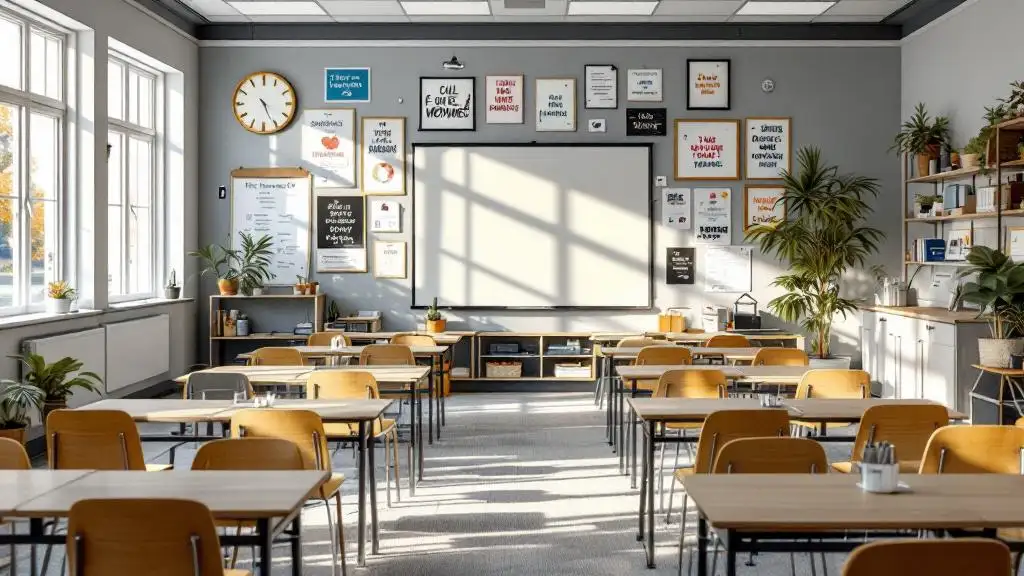
Best Ways To Introduce Self-Advocacy In Autistic Teens

Best Ways To Support Autistic Employees In Customer Service Roles

Best Practices For Autism-Friendly Volunteer Programs
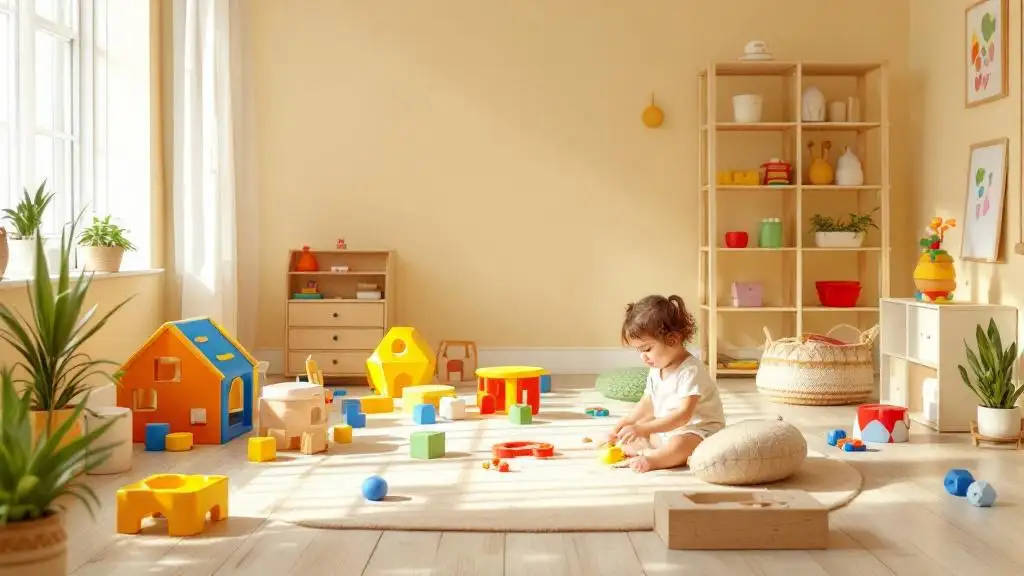
Autism And The Benefits Of Sensory Play For Emotional Growth
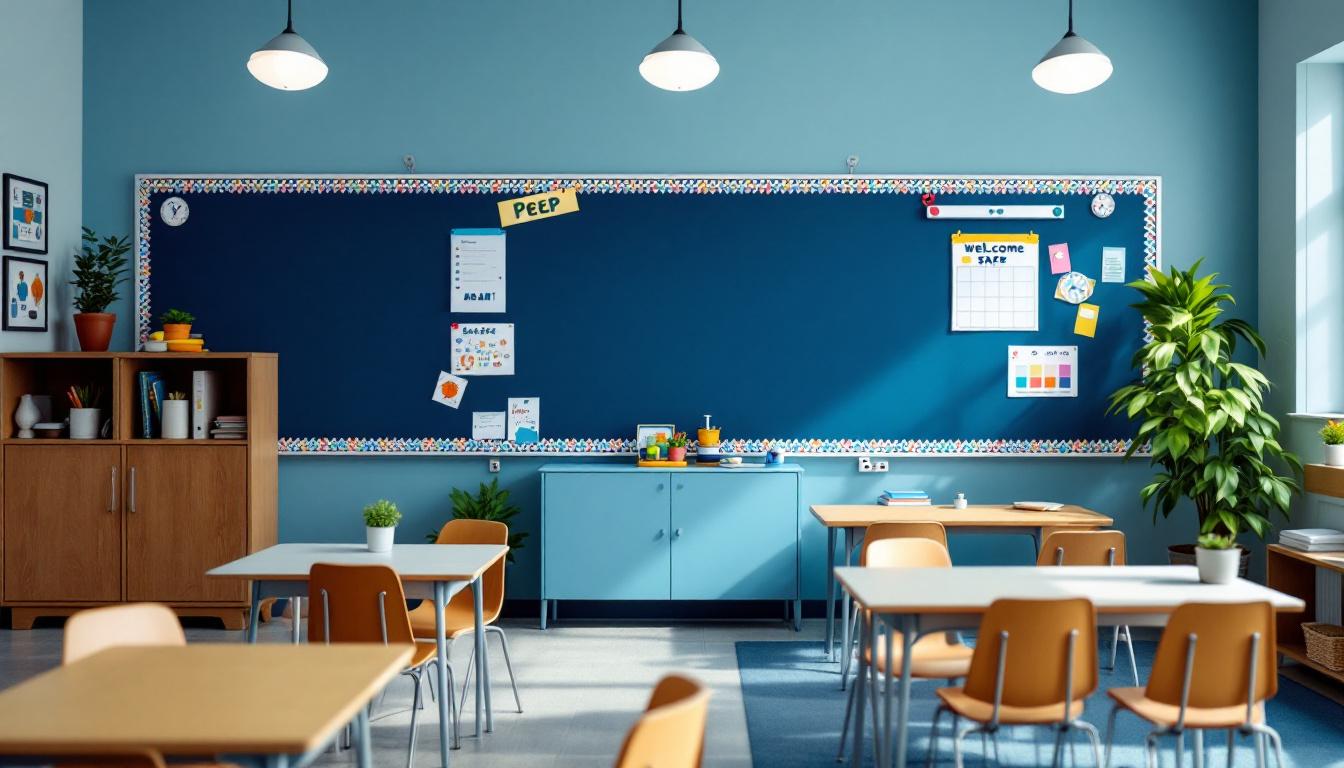
Autism And Strategies For Building Peer Relationships
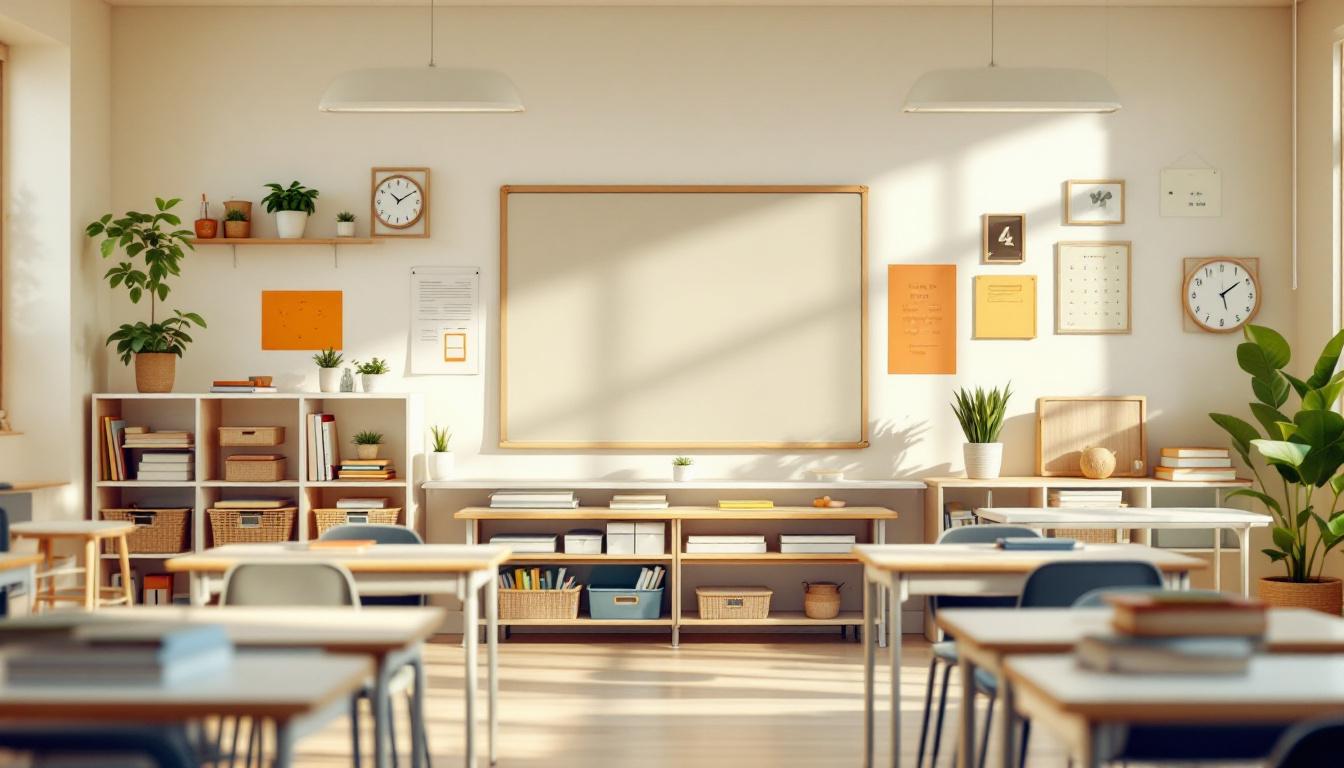
Understanding How Autism Affects Memory Processing
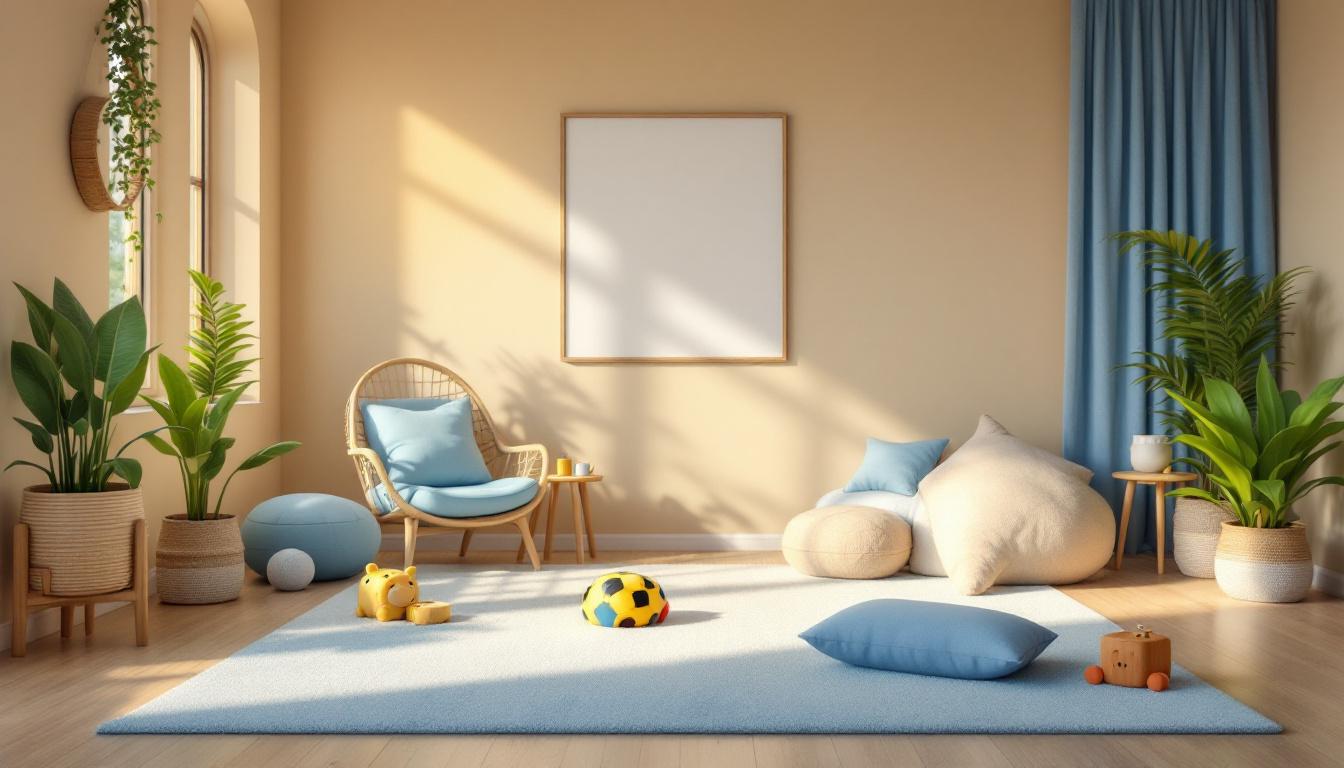
Autism And Strategies For Building Coping Skills In Teens
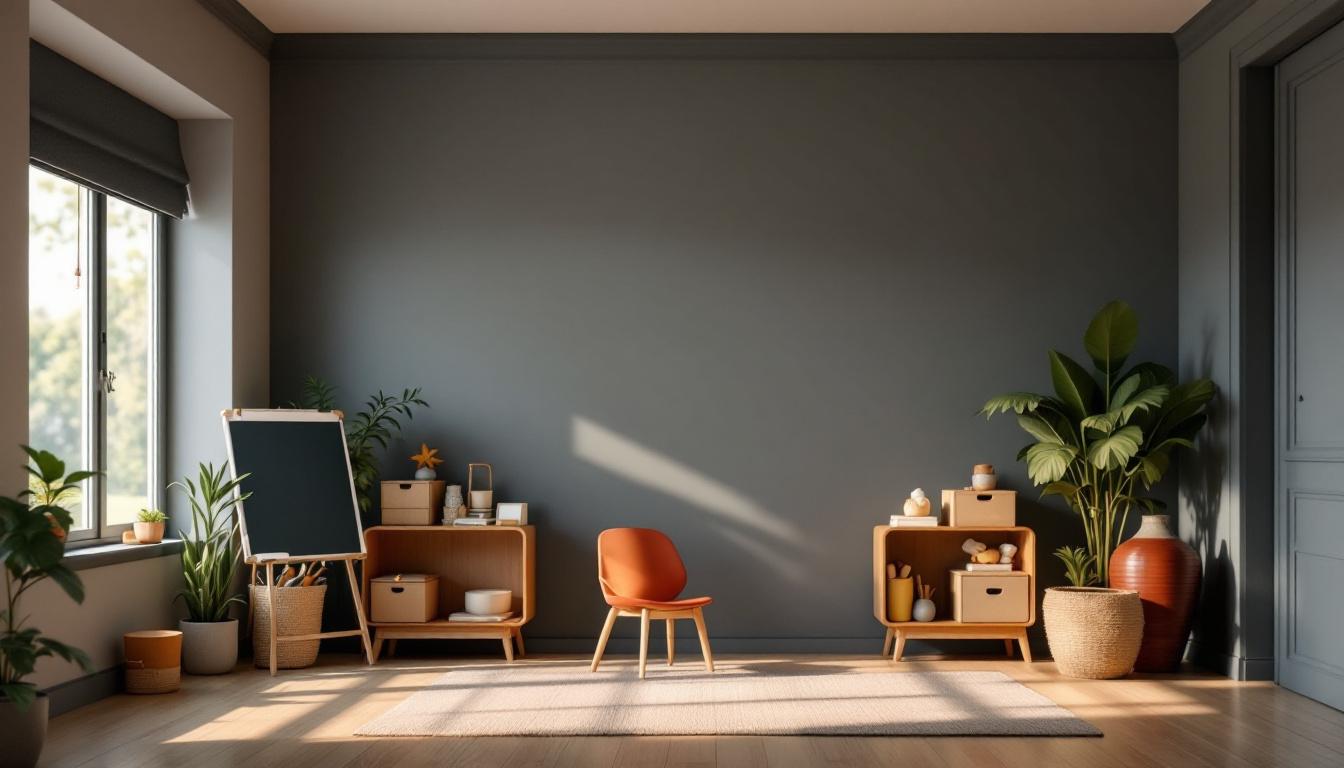
The Role Of Parent Training In Autism Intervention Programs

Autism-Friendly Workplace Accommodations

Using Visual Timers For Autism Time Management
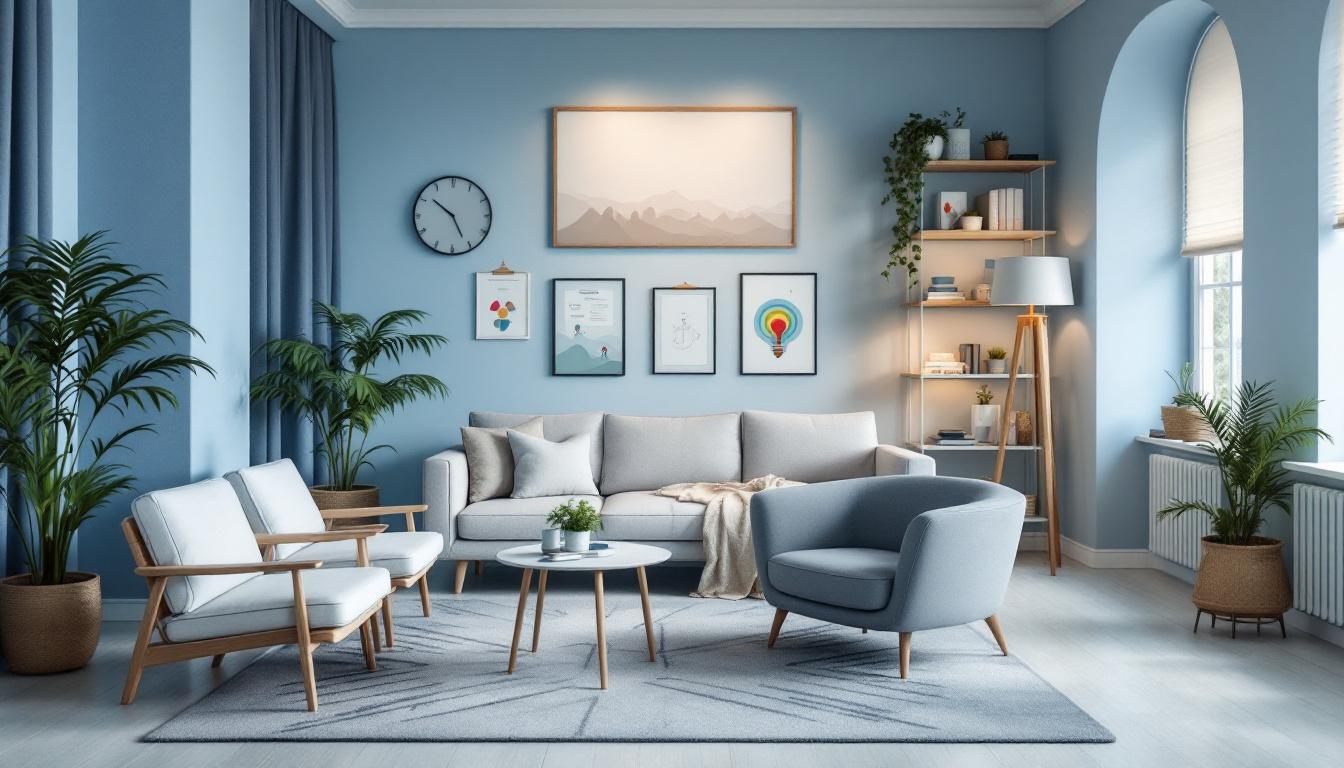
What Is ABA Therapy?
We’re All About You, Your Family, and Your Child

